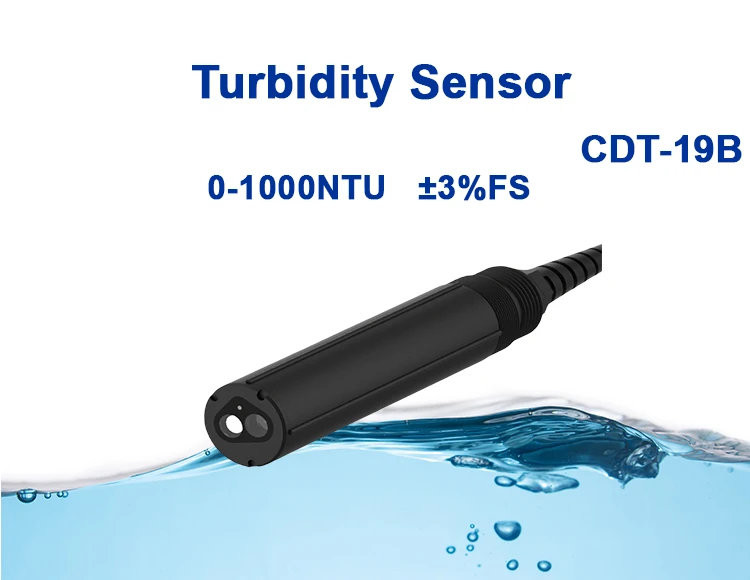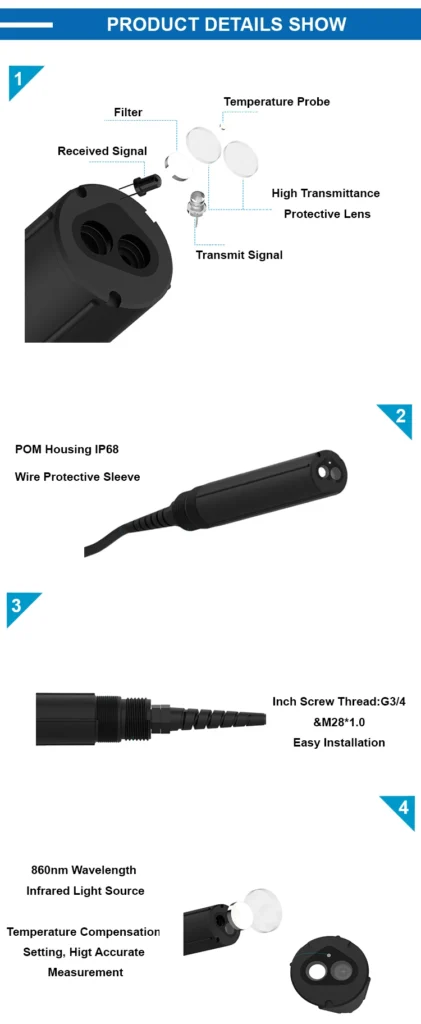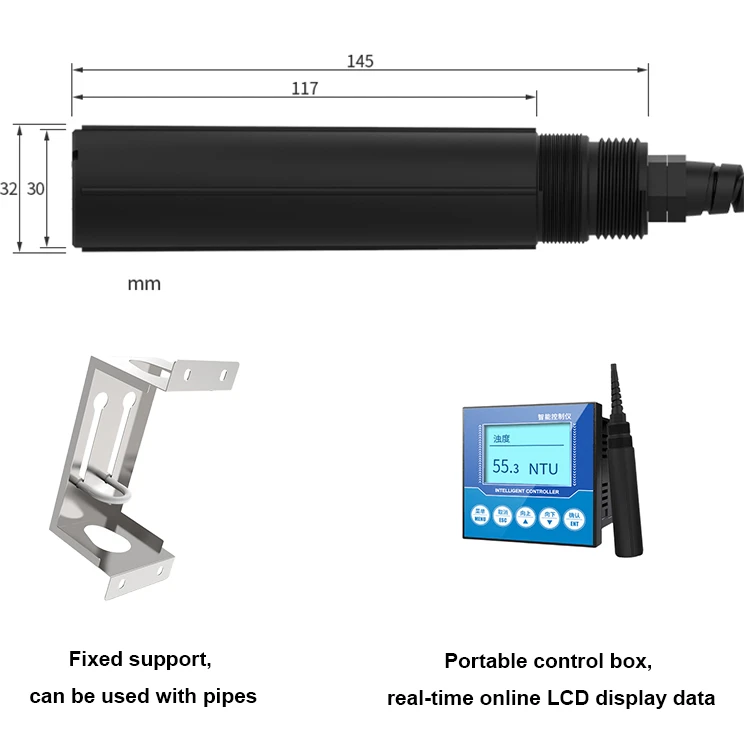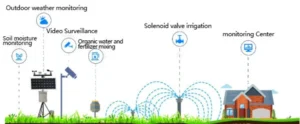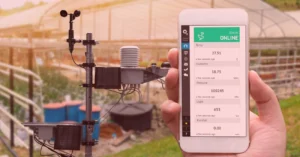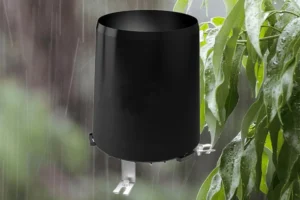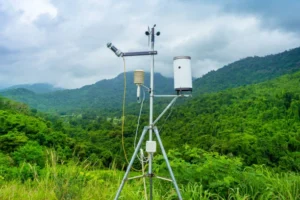how does a turbidity sensor work
Turbidity is an important measure of how cloudy or hazy a fluid is. It is caused by suspended particles. Turbidity sensors are important in many fields.
People use them in water treatment and environmental monitoring. These sensors help keep water sources safe and of good quality. Here’s a detailed look at how turbidity sensor work.
Basic Principle
The main idea of most turbidity sensors is how light interacts with particles in a liquid. When light goes through a clear liquid, it moves in a straight line with little interference.
When the fluid has particles like clay, silt, algae, or other matter, light hits these particles. This makes the light scatter or get absorbed. Turbidity sensors check how much light is scattered or absorbed. They use this information to measure how cloudy the fluid is.
Types of Turbidity Sensors and Their Working Mechanisms
Light scattering Turbidity Sensors:
These are some of the most common turbidity sensors. They work by using light scattering. A turbidity sensor has a light source. This is usually an LED, which stands for Light-Emitting Diode.
It sends a beam of light into the fluid sample. When the light hits suspended particles in the fluid, the particles scatter the light in many directions. The sensor has a detector set at a specific angle, usually 90 degrees to the light source.
This helps it catch the scattered light. As more particles float in the fluid, more light scatters to the detector. The detector turns the strength of the scattered light into an electrical signal. They then process and adjust this signal to give a turbidity reading.
People often show this reading in Turbidity Units (NTU). In a water treatment plant, a turbidity sensor measures how clear the water is after the deposition process. If the NTU value goes up, it shows that more suspended particles are in the water. Operators can then take steps to make sure the water meets quality standards.
Light attenuation – based Turbidity Sensors:
Turbidity sensor work based on the principle of light attenuation or absorption. Like turbidity, these sensors use light scattering. They have a light source that sends a beam of light through the fluid sample.
Light attenuation sensors do not measure scattered light. They measure the light that goes through the fluid.
This light then reaches the detector on the other side of the light source. As more particles float in the fluid, it absorbs or scatters more light. This leads to a decrease in the light detected by the sensor.
The initial light intensity from the source and the detected light intensity help calculate the fluid’s turbidity. Industries that deal with cloudy fluids often use turbidimetric sensors. People often find them in wastewater treatment plants. These sensors help track how well the sludge thickening process is going.
Transmissometric Turbidity Sensors:
Transmissometric sensors are a type of turbidimetric sensor. They measure how much light comes from the source compared to the light that goes through the fluid and hits the detector.
The sensor can find the turbidity of the fluid by comparing these two values. These sensors help measure low turbidity levels accurately in various situations. This is important in making ultra-pure water for the solid-state device material industry.
Calibration and Accuracy
To get accurate turbidity measurements, we need to calibrate sensors regularly. Calibration uses standard reference materials that have known turbidity values. Manufacturers give calibration standards with specific NTU values. They adjust the sensor’s output to match these values.
Environmental factors like temperature, pH, and the type of particles in the fluid can affect turbidity measurements. Some advanced turbidity sensors have built-in temperature compensation. This helps them deal with temperature changes. Some sensors may need extra changes based on the fluid’s properties.
conclusion
Turbidity sensors are important tools. They help keep the quality of liquids in many different uses. They can use light to measure suspended particles. This helps industries and environmental groups.
This helps them make smart choices. They can take steps to protect water resources. This will help keep operations running well in various processes.
